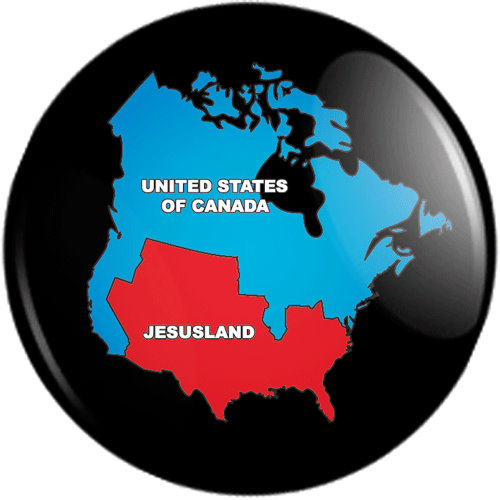 Dear GetReligion readers:
You may have heard that we are convinced that many folks in the mainstream press just don't "get religion." Right?
Dear GetReligion readers:
You may have heard that we are convinced that many folks in the mainstream press just don't "get religion." Right?
At times, we have been tempted to believe that some media folks are actively trying to avoid religion, even when it jumps up and punches them right smack between the eyes.
Case in point? Please read the following essay from The Politico (which is a site that I frequent on a daily basis, I must confess, since I work inside the Beltway). The headline: "United? Yes. But ever more divided." Here's the top of the essay by Bill Bishop of the Daily Yonder website:
Elections don't solve differences in America because our differences aren't about politics. We are separating by the way we live, and these differences are increasing.
This November's elections are likely to be as inconclusive as all the others of the past generation because politics is only a small part of how this country is sharply dividing. ...
Beginning a generation ago, the United States became less a nation than a collection of loosely connected islands -- all busy creating their own economies, cultures and politics. If it seems the country can't find a mutual purpose these days, one reason is that, each year, Americans have less in common with fellow citizens who may live only a few dozen miles down the road.
How to illustrate this? Well there are issues of life expectancy. There are some educational differences (although Bishop handles those in a rather shallow manner). Educational differences lead to economic differences.
Then there are those red and blue differences.
Since the mid-1970s, the U.S. political system has also polarized geographically, as most counties became increasingly Republican or Democratic in presidential elections. The 2008 election, billed as the end of the red and blue division, found the nation more politically segregated than in 2000 or 2004.
Pick something to measure, and you'll find Americans living in increasingly different realities. Suicide rates in rural and urban counties have been diverging since the '70s. Rural counties continue to send a disproportionate number of their young into the armed forces. ...
Differences within the country pile up and then overlap. The way we create families -- the age when the average woman has her first child, for example, or the percentage of couples who cohabitate before marriage -- varies from place to place. And these family habits increasingly correlate with how people vote in presidential elections.
Finally, he runs in the wall that cannot be avoided:
Meanwhile, as federal and state governments stall in tedious partisanship, cities, with their more homogeneous electorates, become the new laboratories of democratic experimentation. Similarly, national church denominations lose authority as religion becomes less of a unifying institution and more an expression of local and individual ways of life within increasingly homogeneous congregations.
There is now a mismatch between our problems and our politics.
So, a major divide a generation ago? Anyone want to nominate a few major events that could have created that kind of division in our culture, in our education, in our media? Yes, try to focus on the journalistic implications of this. Think media coverage issues, folks.
As I read this Politico essay, I could not help but think about another essay that I read on the train yesterday -- the Weekly Standard cover story that ran with the headline, "America's One-Child Policy." This is a piece in an advocacy publication, of course, and there are many passages that can certainly be debated.
However, this religion-related passage hit me as especially fact-driven and, thus, relevant to GetReligion readers. The issue? Why people do and do not have children in postmodern America:
Where people's offspring had for centuries seen to the financial needs of their parents, retired people with no offspring now had access to a set of comparable benefits. And in a world where childbearing has no practical benefit, people have babies because they want to, either for self-fulfillment or as a moral imperative. "Moral imperative," of course, is a euphemism for "religious compulsion." There are stark differences in fertility between secular and religious people.
The best indicator of actual fertility is "aspirational fertility" -- the number of children men and women say they would like to have. Gallup has been asking Americans about their "ideal family size" since 1936. When they first asked the question, 64 percent of Americans said that three or more children were ideal; 34 percent said that zero, one, or two children were ideal. Today only 34 percent of Americans think that a family with three-or-more children is ideal.
But on this question there are two Americas today: a secular population that wants small families (or no family at all) and a religious population that wants larger families. Religious affiliation is part of the story, but the real difference comes with church attendance. Among people who seldom or never go to church, 66 percent say that zero, one, or two children is the ideal family size, and only 25 percent view three-or-more children as ideal. Among those who go to church monthly, the three-or-more number edges up to 29 percent. But among those who attend church every week, 41 percent say three or more children is ideal, while only 47 percent think that a smaller family is preferable. When you meet couples with more than three children today, chances are they're making a cultural and theological statement.
Fascinating. Timely. There seems to be another pew gap out there. How does this affect the news? If you were the publisher of a major newspaper, how would these realities affect you?
Just asking.
